Release 12.1.0.1.0
Part Number E28715-03
Contents
Previous
Next
| Oracle Application Management Pack for Oracle E-Business Suite Guide Release 12.1.0.1.0 Part Number E28715-03 | Contents | Previous | Next |
The Oracle Application Management Pack for Oracle E-Business Suite provides an Administration Dashboard for remotely managing Oracle E-Business Suite targets from an Enterprise Manager Cloud Control console. Jobs can be submitted to start/stop various Oracle E-Business Suite components from the Administration Dashboard. The details and statuses of these jobs can be tracked through standard Enterprise Manager Job screens.
An administrator must have the EM_ALL_ADMINISTRATOR role to run the jobs to start and stop components.
In addition, an administrator must have the "Start and Stop Services" privilege to start and stop services from the Administration Dashboard. See: Privileges and Roles for Managing Oracle E-Business Suite for more information on privileges.
Note: Please ensure that the "Management Services and Repository" is up before using the Administration dashboard. Navigate to console's Setup menu and select Management Services and Repository.
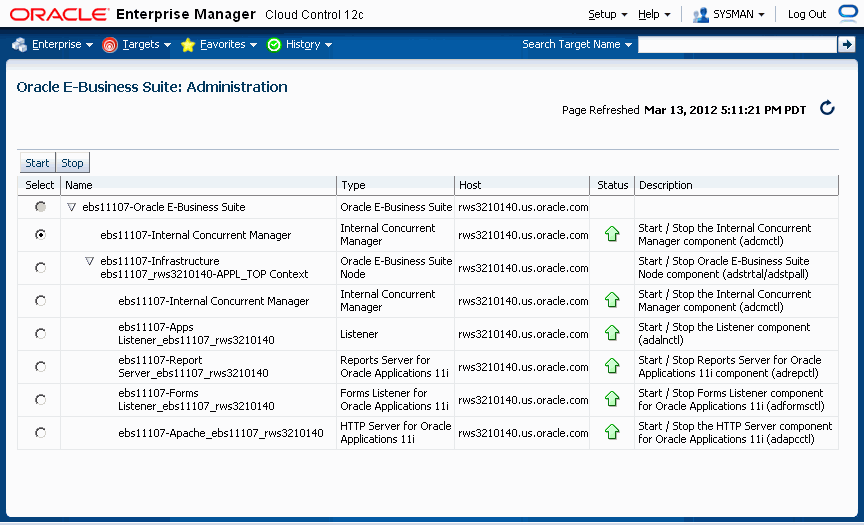
Note: To use the Administration Dashboard, you should have appropriate roles and permissions under User Management for the Oracle E-Business Suite target itself, as well as know the host credentials and applications credentials.
The following table displays the targets in a Release 11i system that can be controlled from the Administration Dashboard.
| Oracle E-Business Suite Target Type | AD script used | Requires Apps Credentials | Short Description |
|---|---|---|---|
| Internal Concurrent Manager | adcmctl.sh | Yes | Start / Stop the Internal Concurrent Manager component |
| Oracle E-Business Suite Infrastructure | adstrtal.sh / adstpall.sh | Yes | |
| Start / Stop the Oracle E-Business Suite node component | |||
| Listener | adalnctl.sh | No | Start / Stop the Listener component |
| Discoverer for Oracle Applications 11i | addisctl.sh | No | Start / Stop the Discoverer component for Oracle Applications 11i |
| Reports Server for Oracle Applications 11i | adrepctl.sh | No | Start / Stop the Reports Server for Oracle Applications 11i component |
| HTTP Server for Oracle Applications 11i | adapcctl.sh | No | Start / Stop the HTTP Server component for Oracle Applications 11i |
| Forms Listener for Oracle Applications 11i | adformsctl.sh | No | Start / Stop the Forms Listener component for Oracle Applications 11i |
The following table displays the targets in a Release 12 system that can be controlled from the Administration Dashboard.
| Oracle E-Business Suite Target Type | AD script used | Requires Apps Credentials | Short Description |
|---|---|---|---|
| Internal Concurrent Manager | adcmctl.sh | Yes | Start / Stop the Internal Concurrent Manager component |
| Oracle E-Business Suite Infrastructure | adstrtal.sh / adstpall.sh | Yes | Start / Stop the Oracle E-Business Suite node component |
| Listener | adalnctl | No | Start / Stop the Listener component |
| Forms | adformsctl | No | Start / Stop the Forms component |
| OC4J forms | adformsctl.sh | No | Start / Stop the Forms OC4J Forms component |
| OC4J oacore | adoacorectl.sh | No | Start / Stop the oacore oc4j oacore component |
| OC4J oafm | adoafmctl.sh | No | Start / Stop the oafm oc4j oafmcomponent |
| Oracle HTTP Server | adapcctl | No | Start / Stop the Oracle HTTP Server component |
The Administration dashboard can be reached through the following navigation paths:
From the main page for the Oracle E-Business Suite system, click on the Administration tab.
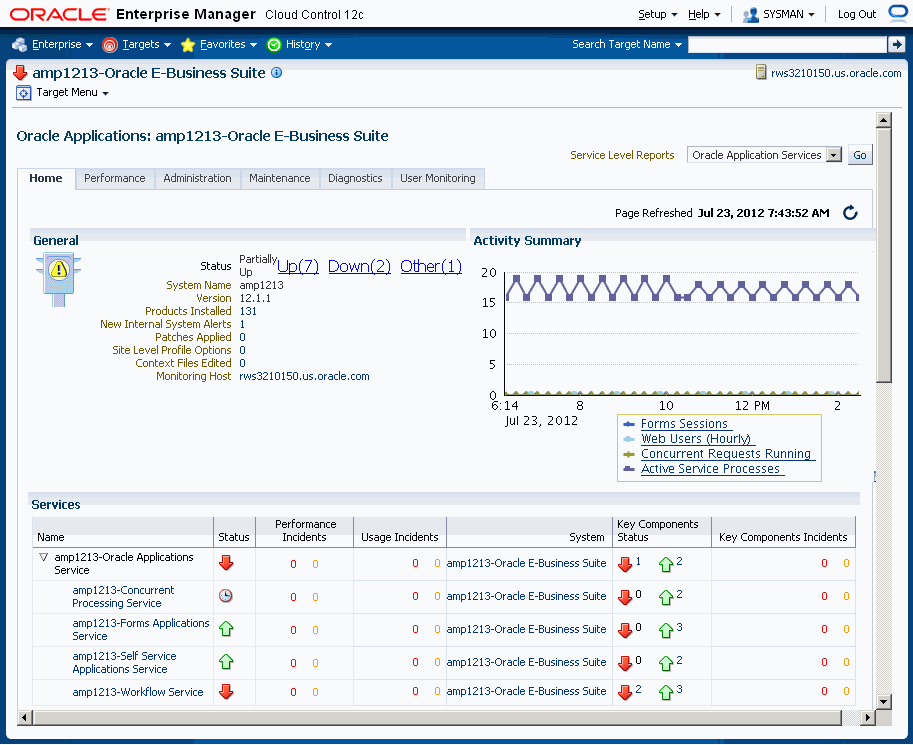
Then from the Administration tab, click on the icon for Administration.
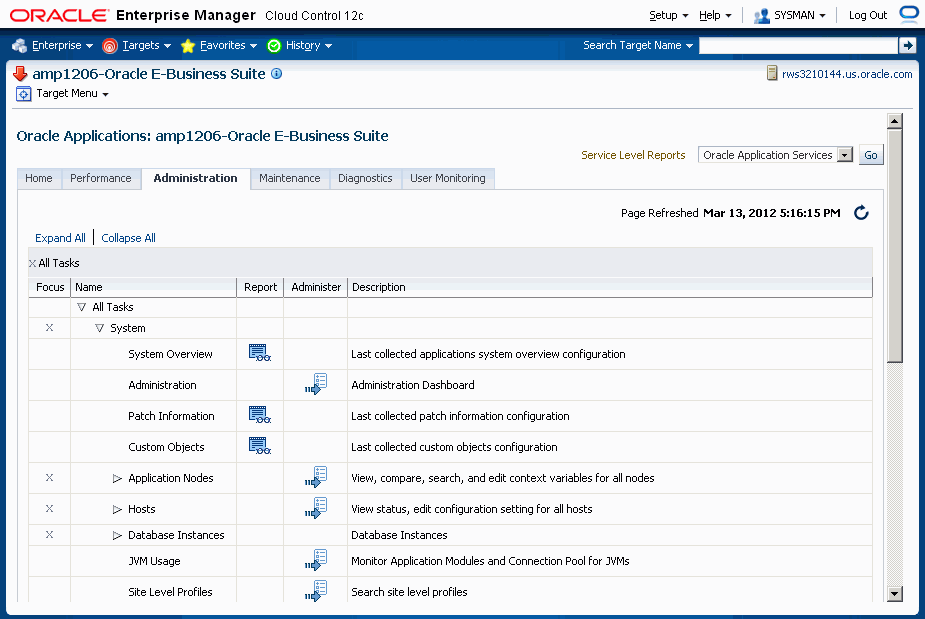
From the Up/Down/Other Target Status page on the Home tab:
Click on a Status link.

In the resulting Availability Report page, click on the Administration Dashboard button.
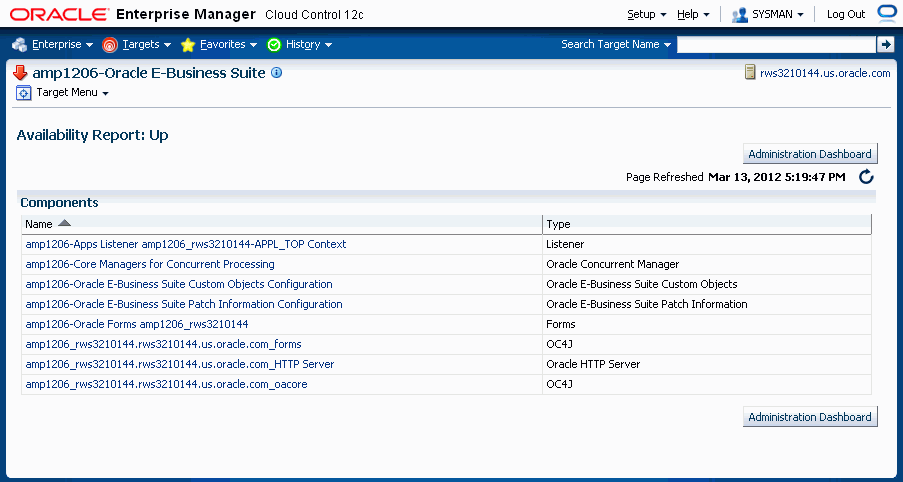
To start/stop a target, select the target and click the Start or Stop button. A message page will appear. Click OK to submit a job for the requested operation.
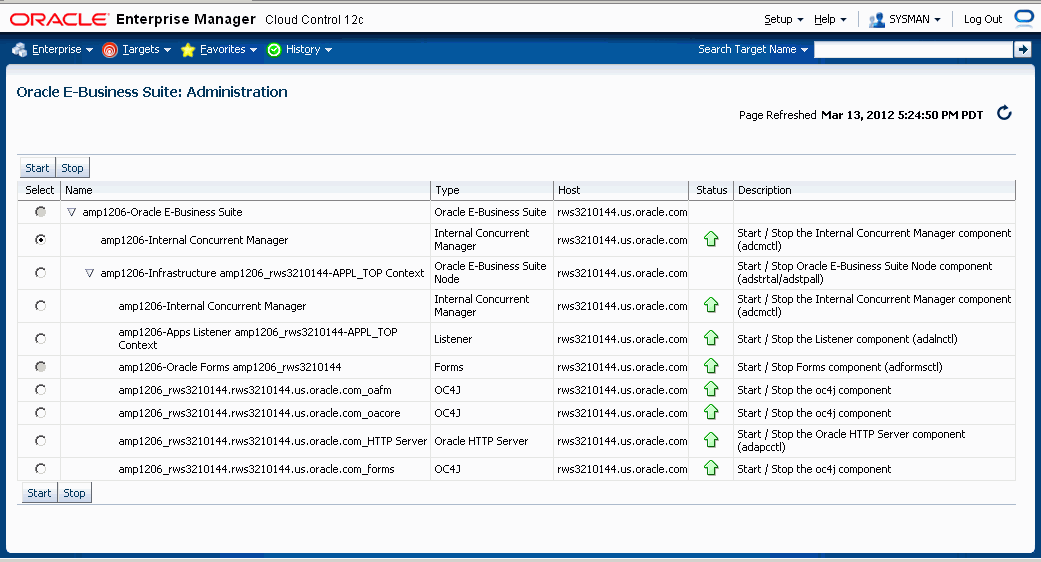
The status of the Job can be viewed from the Oracle Enterprise Manager Jobs page. Navigate to the Enterprise menu > Job > Activity.
![]()
Copyright © 2007, 2012, Oracle and/or its affiliates. All rights reserved.